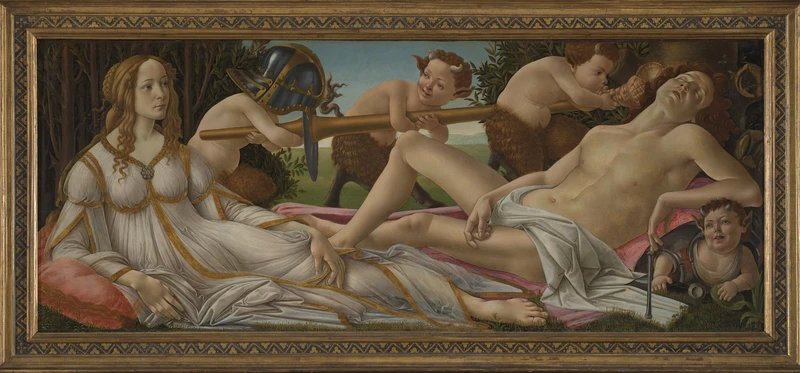Botticelli in Cambridge
10 May-10 Sep 2024


This summer, Venus and Mars (c.1485) by Sandro Botticelli (c.1445 –1510) is leaving the National Gallery for the first time since its acquisition in 1874 to go on display at the Fitzwilliam Museum. The unprecedented loan is one of 12 of the nation’s most iconic and well-loved paintings from the National Gallery’s collection going on display at museums and galleries across the UK in celebration of their 200th birthday.
Venus and Mars will be exhibited in a new temporary display at the Fitzwilliam Museum. Narratives of sex, nudity, intimacy, gender and power will be explored by presenting the painting alongside masterpieces of Italian art from the 1400s and 1500s from the Fitzwilliam collection, including Titian’s Venus and Cupid with a lute-player (c.1555-1565) and the spectacular new acquisition of Antico’s remarkable sculpture of the god Apollo (c.1520-2), widely considered to be one of the finest Italian Renaissance bronzes ever made. If Venus was thought to be the idealised vision of female beauty, then Apollo was felt by many to capture the male equivalent of the idealised beauty of a young man.
Venus and Mars was originally commissioned as a bedchamber painting. In renaissance Florence, such works were intended for both male and female audiences and commissioned by a person of elite stature, often at the time of a wedding. In the late 1400s, the domestic picture gallery was not yet a feature of grand palaces, though they had been introduced by the time Titian’s Venus and Cupid with a lute-playerwas painted. The display includes two objects that once belonged to one of the most learned Italian women of her day, Isabella d’Este, for different spaces, her study-treasury and her dining table, which depict both male and female nudity.
The story of the love affair between Mars and Venus is told in Ovid’s Metamorphoses. Vulcan would discover the adultery of his wife Venus and her lover Mars, fashioning a fine iron net to catch the pair in bed and publicly expose them to the other gods of Olympus. Botticelli’s painting seemingly depicts the moment before their exposure; an unexpectedly youthful Mars lies sleeping, naked, tamed by love or exhausted after sexual congress; Venus reclines clothed in what would have been understood as a version of an underdress, her hair braided into its collar. The juxtaposition of a clothed woman with a naked man was unusual in art of this time, where the reverse was more often found.
The display is the result of a new participatory research project led by the Fitzwilliam Museum, which invites young people and community partners to explore different perspectives, experiences and interpretations of works of art from its collections and elsewhere.
Sandro Botticelli (about 1445–1510) born in Florence, Italy, is now seen as the archetypal Quattrocento Florentine artist, celebrated especially from the nineteenth century onwards, for the beauty of his line and of the young men and women he included in his celebrated mythological pictures, most famously The Birth of Venus, Primavera, Pallas and the Centaur and the National Gallery’s Venus and Mars. He spent almost all his life in Florence - growing up there, apprenticed first to Fra Filippo Lippi and then working for the city’s mercantile elite. Under Lorenzo de Medici’s patronage, he produced some of his most innovative images.